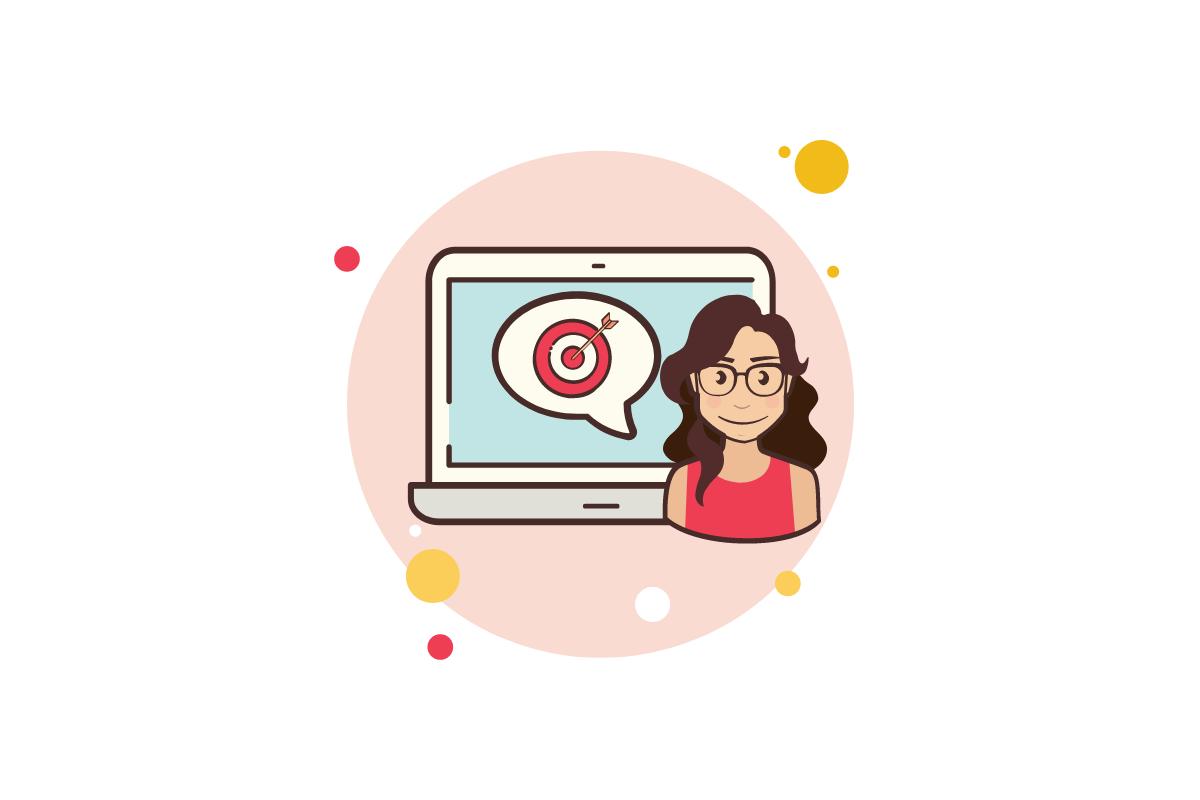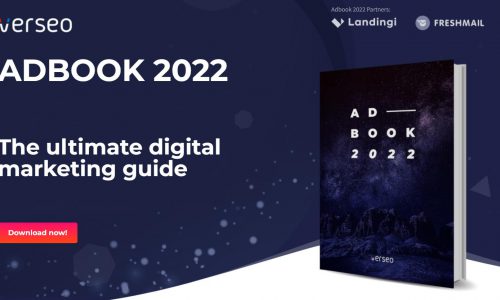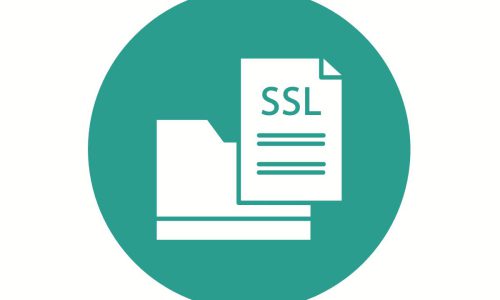Table of contents
Czytasz teraz:
Digital Marketing Strategies – Mapping the Customer Journey
- Effective Digital Marketing Strategy – What Does it Consist of?
- Dive Deeper into Key Points of Digital Marketing Strategies
- Determine your target audience
- Determine customer paths
- Optimize advertising channels
- Determining the optimal advertising budget
- Determine the budget properly – example
- Determining the appropriate time for displaying ads (campaign schedule)
- Determining the appropriate frequency of ads display (channel capping)
- Ad creation and text
- Create custom content
- Effective Digital Marketing – You Know the “What”, but not the “How”?
- What Helps Make the Right Decisions Regarding Digital Marketing Strategy?
- Customer's journey in digital marketing campaigns
Close
What does effective digital marketing mean? Is effective Internet marketing limited only to the optimal alignment of advertising channels, or do more factors come into play? Is effective marketing always the same, or does its definition have to change over time along with the change of… basically everything else? I hope this article will be both enjoyable and useful!
Effective Digital Marketing Strategy – What Does it Consist of?
To map the concept of effective marketing in your own business, you need to consider key elements:
- Determining proper business objectives
- Determining the target audience (market research)
- Determination of customer paths
- Use of optimum advertising channels and campaign strategy
- Determining the optimal advertising budget
- Determine the appropriate time to display advertisements
- Determining the appropriate frequency of advertisements display – capping
- Creation and text of advertisements
- Relevant content
There are probably other points that make up effective digital marketing – for example, the experience of the person who creates individual components or the specific conditions of a given advertising channel. For the sake of simplicity and understanding, however, let’s assume that the above are of primary importance.
Dive Deeper into Key Points of Digital Marketing Strategies
Whatever we do in life, there’s a purpose. A universal principle that is particularly applicable in marketing because identifying a good purpose is crucial in the subsequent selection of tools, channels, resources, and even data analysis. Typical marketing goals include increasing sales, increasing shopping cart value, increasing visibility, website traffic, or acquiring leads. A good goal is also expressed in a number, such as: acquiring 1000 email addresses from a particular landing page, and having a time horizon, such as: within 3 months.
(You will find the rest of the article below the form)
Contact us and get a free quote
We will analyze your business and prepare an individual price offer for the optimal marketing mix for you. Completely free.
Verseo spółka z ograniczoną odpowiedzialnością with its registered office in Poznań, at the following address ul. Węglowa 1/3, 62-122 Poznań is an administrator of your personal data.
About Verseo
Company’s office is located in Poznań. Company is entered into the register of entrepreneurs, kept by the District Court of Poznań – Nowe Miasto i Wilda in Poznań, 8th Commercial Division of the National Court Division under number 0000596164, NIP (Tax Identification Number): 7773257986. You can contact us by writing a letter on the address indicated above or e-mail:[email protected]
You have right to:
- access to your personal data,
- correct your personal data,
- demand to remove your personal data,
- restrain to process your personal data,
- object of process your personal data,
- transfer your personal data,
- withdraw consent.
If you think we process your personal data not in accordance with the law, you have right to object to supervisory authority – President of Personal Data Protection Office.
We process your personal data to:
- handle your question, based on art. 6 ust. 1 lit. 6 of General Data Protection Regulation
- promote our goods and services including ourselves in connection with your consent, based on art. 6 ust. 1 lit. a of General Data Protection Regulation
- protect or claim in connection with our reasonable interest, based on art. 6 ust. 1 lit. f General Data Protection Regulation
You share your personal data freely. Please remember that without sharing your personal data you will not be able to send us a message, and we will not be able to answer you.
We can share your personal data with trusted recipient:
- providers of tools made for: website analytics, marketing automation,
- hosting operators.
We will process your personal data by the time:
- which is necessary to achieve a specific purpose for which they were collected and after this term by the time which is necessary to protect or possible claim,
- of withdraw your permission .
We don’t process personal data in a way, which would involve making only automated decisions about you. More information about processing of personal data you can find in our privacy policy.
Determine your target audience
When building a marketing strategy you usually want to bring your ad audience closer to your model customers (buyer personas). This means that you need to consider both demographics, such as age and gender, as well as interests or profiles of websites visited.
Determine customer paths
Find where customers look for information about products and services in your area, as well as the places where they might potentially first come across a topic and become interested in it. In general, then, it’s about creating a hypothetical path for a customer to interact with your message in terms of their readiness to move on. Not every business designs its services or offerings for the customer path. Some prefer to fit into a classic purchase funnel, which makes just as much sense on a general level of understanding consumer behavior.
–> Read more about customer path

Optimize advertising channels
No business has a bottomless bag, and choosing the right advertising channels is basically the first step in optimizing our marketing efforts. The correct methodology is to invest in those channels that have the best ratio of budget invested to revenue generated (i.e. high ROAS – Return on Ad Spend). However, it’s worth realizing that a statistical customer on the Internet has a chance to meet our message on many levels. Our experience from campaigns run by Verseo shows that the combination of several channels and their mutual support makes each of them more effective than when they function independently.
Determining the optimal advertising budget
This is inextricably linked to the industry, margins, operating costs, but also the capabilities of a given advertising environment. It often happens that we achieve stable and satisfactory results within the framework of e.g. Google Ads and the client becomes interested in extending the budget. Generally, it’s a good move, but it requires caution, because the wider we direct our messages, the effectiveness of converting a user into a customer may drop. In turn, this means the profitability of the entire advertising channel decreases.
Determine the budget properly – example
An online beauty store invests EUR5,000 EUR per month in Google Ads and the cost of conversion is EUR 3,5 , which is an acceptable level for the client. The decision to increase the campaign budget by another EUR 2,500 and expand the audience with new groups (assuming, of course, good practices in their selection) increases the cost of acquiring a customer to EUR 5, which is more than the customer can afford. Of course, work on lowering the cost of acquiring a customer can also be done on other levels – such as User Experience.
Digital marketing (and marketing itself as a broader term) is a system of communicating vessels and it’s worth testing and implementing solutions in various fields – the main thing is not to act neurotically and implement changes in intervals to distill their impact on results.
Determining the appropriate time for displaying ads (campaign schedule)
The most sensible thing to do is to use an example to illustrate what’s going on. It happens that an online store between 8 am and 4 pm generates a relatively high number of abandoned shopping carts (people order products at work, but then something pulls them away from their purchases and they don’t finish them on their private computers). The cost of customer acquisition is then quite high, but drops sharply after 5 p.m. If the store has a limited budget for advertising, then it will be worth considering setting ads to display only between 5 p.m. and 11 p.m. and see if such a framework will keep the customer acquisition dynamics within the accepted cost. Another method involves capping rates and forcing the system to spend more during certain hours.
However, it’s worth keeping in mind that a lot of ads in Google Ads or Facebook Ads are already run using self-learning algorithms, which independently select the budget for a given time and audience in the search engine. In Google Ads smart campaigns, for example, you can no longer determine the display time of the ad yourself, and we have to rely on the system to do so.
Determining the appropriate frequency of ads display (channel capping)
At the beginning, a small remark – remember that this is the opinion of the author of the text, and not the revealed truth applicable always and everywhere.
The general view is: the more often, the better.
The average viewer consumes a lot of text, images and video per day. Counting on hitting him with a guided missile fired from the big bell is a rather idyllic vision of how digital marketing works. In reality, we can’t predict when a potential customer will be ready to buy – often, for example, an ad from another manufacturer may ultimately convince him to return to your site. So you need to intensively surround him at every stage of the funnel so that he doesn’t escape you at the GOOD moment.
Sometimes you’ll be accused of “spamming” the ad or that someone can no longer look at it… Then you must be tough and clench your teeth, because with a high probability your analytics will show that this approach is effective.
Ad creation and text
Is creativity the key in determining the effectiveness of a given banner or video? Hell no. Correct, aesthetically pleasing composition, remembering to use CTAs and, above all, consistency – these are foundations of digital advertising. The average content viewer in today’s world is simply bombarded with information. In the previous point, I’ve already pointed out that frequency is important, but its integral element must also be the visual consistency of materials. Otherwise, what if the recipient views your ad 5 or 6 times, if each will present a different style or color and as a result will not stick in the memory.
Create custom content
A tailor-made content marketing strategy is simply a must. Creating great content and its meaningful distribution at different stages of the funnel ALWAYS turns out to be valuable for business. Content marketing is not only about content that supports SEO, but also about tools, tutorials, webinars, infographics, trendbooks, and dozens of other solutions with which you can, for example, re-engage your audience or get the necessary data to contact them.
A quality blog post, or a well-narrated social media profile can add a significant value to your marketing endeavors that increase brand awareness, conversion rates and influences lead generation.
Remember also that content marketing is a communication springboard for various activities and supports not only SEO, PR, but also paid channels and narration in social media. So if you think about your business in long-term terms, then it’s definitely worth creating a content base that will resonate with customers at different stages of their “life” in the buying process or already post-sale.
Effective Digital Marketing – You Know the “What”, but not the “How”?
I outlined the factors that, roughly speaking, affect whether online marketing will be effective. So you already know what you need, but the question remains, where do you get the information to satisfy each of the above points? I’ve a few tips for you.
If your business is based only on the Internet, but you have not yet conducted even a rudimentary effort to collect data about your customers or relevant key phrases, then it makes sense to contact an experienced partner who, based on the cases he has already worked with, will be able to advise you on the first hypotheses worth testing.
You may have an idea of, for example, the best search phrases that your customers are likely to type in. However, it may turn out that either these are not converting phrases (i.e. phrases that are not actually typed with the intention of making a purchase), or they are too difficult to ever gain good positions in the search engine within a given budget allocated for positioning your website.
The same goes for paid activities in digital advertising – e.g. in Google search or on Facebook. You may think that a certain group of people will be particularly interested in your products or services, but the business practice may indicate otherwise. Your customers may be mostly women, but are you sure that they are the ones who decide to buy? Or vice versa – a guy buys the products, but are you sure he made the purchase decision? Marketing and communication can diverge already at the level of gender, and then the deeper you go, the darker the data density gets. 🙂
Choosing a campaign target can also be tricky. Suppose you have a new product, with no brand built. In that case, will you focus on sales first, or will you focus on views, reach and creating brand perception?
What Helps Make the Right Decisions Regarding Digital Marketing Strategy?
Digital marketing loves analytical tools
Use tools like Google Analytics, Google Search Console, Google Keyword Planner, Smartlook, Hotjar, Senuto or even Answer The Public. Thanks to them you’ll find out who your customers are (remember the chapter about determining your target audience?), how they navigate your website and search engines, what interests them and what problems they have that you can solve.
Get Advice from Experienced Specialists (not only marketers)
If you don’t have access to tools or don’t know how to figure it all out, you can ALWAYS contact specialists in the field who will firstly set up proper analytics, and secondly will suggest solutions (based on their own experience) that will potentially benefit you.
Consider getting Offline insights
Basing your digital marketing strategy and activities on offline opinions and insights can be misleading, but still it’s always good to provide a specialist or freelancer with the fullest possible picture of what the client looks like and how the company’s processes work in order to adjust the scale and type of clients to the status quo.
Count your Business assets
You need to know – and no one can help you with this – how much resources you can devote to client acquisition and this will be the core value around which you’ll navigate.
Customer’s journey in digital marketing campaigns
All points listed above are extremely important. Don’t underestimate them when you set your business activities and marketing plan. If you don’t do this work in the beginning, then after months of toiling away, you’ll be asking yourself this fundamental question: what have I done?












